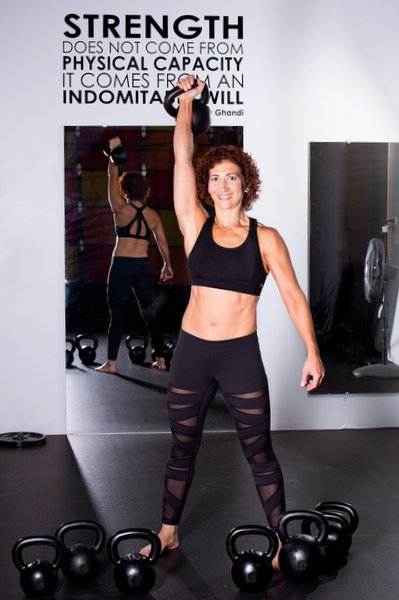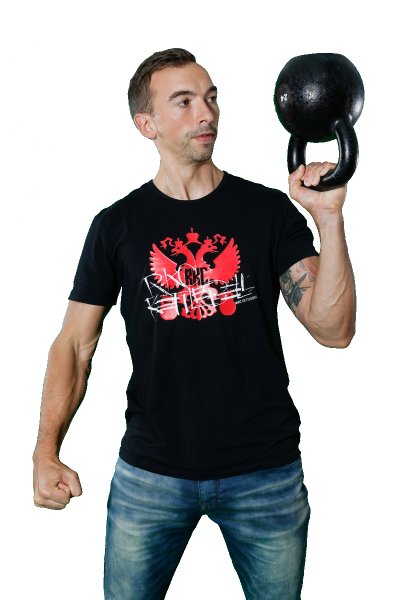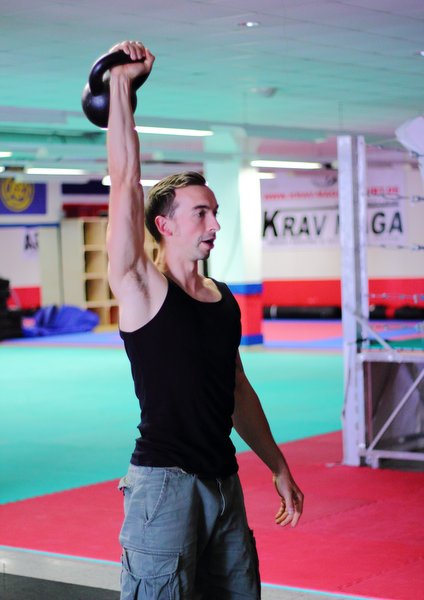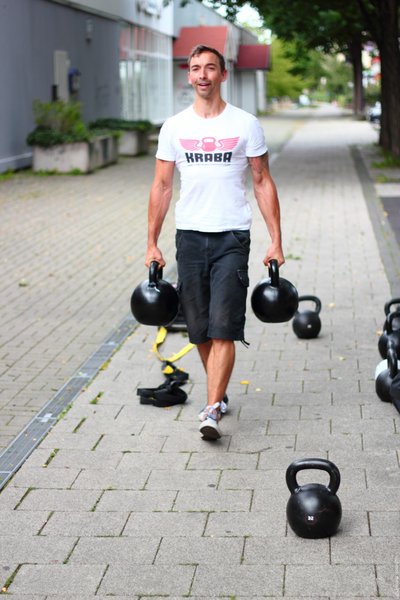
A recent conversation with a client went something like this, “Of course you can do [insert exercise]…you’re a professional.” A little while later, a prospective client asked, “Do you think I have the potential to be good at kettlebells?” Combine that with another amazing weekend hosting an RKC workshop, and this blog post was born.
Of course I can do all of these kettlebell lifts, I’m a professional. But how do you think I became a professional? I certainly didn’t come out of the womb able to do all of this stuff. I had to learn it and practice it, and be open to more learning and more practicing. Every. Day. Every day until I earned my RKC and every day since I earned my RKC.
I didn’t just pick up a kettlebell and magically start using it perfectly. I was once in exactly the same position as anyone who comes to my gym to learn kettlebells. I had to learn each exercise from square one, just as all of my clients do. Truth be told, it took me a long time to learn a proper swing! That deep hike and explosive hip snap was as foreign to me as it is to you. After lots of dedicated practice and consistency, it’s now feels so natural it’s hard to remember how awkward I once felt.
Even after 6+ years of being an RKC, I still don’t just pick up a kettlebell and magically start using it perfectly. Every time I pick up a kettlebell, I focus on all the components that I know make up proper technique.
I make sure I set up with proper form and I make sure I swing, clean, press, etc. with proper form. I think about making every rep the best I can make it. I concentrate on how each rep feels… “That one needed a little more tightness in my snap, I need to make sure I keep my back flat when I hike.” I video myself now and again to check and hone my technique. I never approach or pick up a kettlebell on auto-pilot.
I’m better able to recognize and make micro adjustments, but that certainly didn’t happen overnight either! It took a lot of time, patience, practice and consistency. It sometimes took losing my patience a bit. It certainly took lots of coaching and the ability to be coachable.
At an HKC workshop several years ago, after all the other participants and instructors introduced themselves and told about their vast athletic backgrounds, I said “I have a background in nothing.” I wasn’t an athlete and I didn’t participate in any sports. I had a history of being sedentary and inactive or yo-yo exercising, until I found kettlebells in my late 30’s. That is when I found the athlete inside me.

Some people are more naturally athletic and can learn technique more easily than others. I’m not one of those people, but that doesn’t mean I’m not capable of learning a new technique. For me, it just means that it might take me a little longer to learn something new, and I might have to put in a little more time practicing a new skill but I’m okay with that. I allow it to leave me with a bigger sense of accomplishment.
I believe that anyone can become an RKC, and the recipe is simple. Start with a dedicated mindset to your training practice, add to it lots of hard (but smart) work and consistency, and sprinkle in some patience and time. Yes you; the one who picked up your first kettlebell today! Or you; the one who’s been using kettlebells for a few years. ANYONE willing to put in the time and dedicated effort to good technique can achieve RKC status, or any goal you set for yourself. Some of you may be like me and might have to work a little harder or a little longer than others, but either way, I truly believe that anyone can do it.
The way the RKC course is structured, everyone learns the progressions and regressions for each exercise so that you are able to teach people of all fitness levels. In the process, you are learning what you need to improve your own technique. The structure of the course also allows you to constantly practice coaching others, so you can hone your teaching skills while you’re learning everything. Combine that with the plethora of valuable resources offered by Dragon Door, titles like Master the Kettlebell, Strong Medicine and Mental Muscle and you have everything you need to succeed.
Over the years I’ve participated in several RKC workshops. Whether the participants are seasoned athletes or new to training and whether they do or do not pass the requirements, the one common theme I see among them is that the RKC was the best course they have ever attended and many report that it was life changing. It certainly was for me!
So, what’s stopping you? Go sign up for those kettlebell lessons or for an RKC workshop!
****
Shari Wagner, RKC-II, CK-FMS owns Iron Clad Fitness in Denver, Colorado. She can be contacted through her website at IronCladFit.com, email: info@ironcladfit.com or by phone 720-900-4766. Follow her on Facebook: facebook.com/IronCladFitness and Twitter: twitter.com/IronCladFitness.


